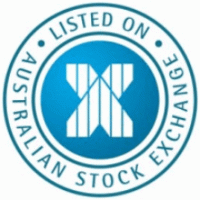
Chris Weston, Chief Market Strategist at IG Markets
US stocks have given Asia backbone to rally today, although newsflow specific to the region is fairly mixed.
The FOMC minutes showed again that central banks have the power to surprise and after what we’ve seen from the ECB, BoJ and now the FOMC minutes, it seems the script by which the market is keying off is not going to plan. This is causing market positioning to shift around fairly aggressively.
The minutes gave a clear message to markets that interest rates are staying low for a long time; however they won’t stay low forever. It also seems that they were designed to be the final word on the interest rate debate that has been ragging since Janet Yellen (seemingly) mistakenly said there would be six month lag between rounding off the bond-buying program and the Fed hiking rates.
Fed pushing back on rate hike expectations
Since the Fed chair’s comments, Mrs Yellen – as well as a number of other Fed officials – has pushed back on the rate hike statement, although speeches from different Fed officials have provided fairly explicit views on when the funds rate should increase. The minutes have closed off this debate, although they are not so dovish as to close the door fully on two-way risks and in turn promote complacency.
The bid in the middle of the bond curve, four basis point drop in the fed funds future (December 2015 contract) and the rally in equities were testament to a market that feels the Fed is still behind them, and even though rates will be put up one day, it will be slow and gradual and ultimately warranted.
The talk on the trading floor today was once again around price action in US markets, moves in emerging market currencies (notably the Korean won) and the USD. It certainly seems like the right call to pull back from easing into EUR/USD shorts at 1.3800. Had Janet Yellen kept to her original March 20 script then EUR/USD could be close to 1.3600 now, and USD/JPY perhaps at 104.00, even if you adjust for the fact that the BoJ seem absolutely fine with the current monetary policy setting. Still, for the USD to fly and for funds to really go overweight the USD again we simply have to see signs of inflation. We are not there yet, but the minute the market sniffs out inflationary forces at play in the US, the USD would likely soar.
In Australia today we came in already faced with futures markets highlighting a good day on the ASX 200, while the AUD/USD was primed to push through the 94 handle. This materialised and it was certainly positive to see the market higher on the day. In addition, the ASX financial sub-index rallied above the October high of 6121.7 and onto the highest levels since 2008, although looks a touch overbought at current levels and has failed to close above this level.
Aussie jobs lift rate hike expectations
The Aussie March jobs report was mixed, with 22,000 full-time jobs being lost, although a massive part-time hiring spree pushed the net figure to a positive number. It still has to be said that for the year the Australian economy has created just over 23,000 full time jobs, which isn’t too bad. A weaker participation rate naturally helped the unemployment rate fall 30 basis points, but judging by the sell-off in Aussie bonds and the bid in the AUD (with AUD/USD hitting a high of 0.9440), the market clearly saw this print as one which can be used as fodder by the rate hike crowd. The swaps market is now pricing in 22 basis points over the coming months (up from 17 prior to the release) and is the most bullish since October.
AUD/USD looks overbought here, so I wouldn’t be surprised to see a short-term move to 0.9370, where those who have missed the move higher may look at fresh longs. I certainly would not be chasing the pair higher at current levels.
China released its March trade figures and again didn’t really keep to the markets script after the strong Korean export print last week. Exports fell 6.6%, relative to expectations of +4.8%, while imports fell 11.3%, relative to expectations of +3.9%. The fact that the CSI 300 is up 1.2%, hardly shows a market expressing concern over the data and most in the market expect a bounce back in the April print. As China’s customs detailed, a large amount of the drop was down to an inflated print in 2013.
The moves from the PBOC to curb hot money inflows, both in the forex market (by weakening the CNY) and repo market have clearly had an effect as well. It will be interesting to see if there is any reaction in CME and LME copper through European trade.
Europe looks set to price in the stronger US finish, with S&P futures up 0.7% from the European cash market close. The calendar today looks fairly busy with the BoE rate decision (likely to be a non-event), Italian industrial production, French manufacturing production and US jobless claims. Fed member Charles Evans and ECB members Peter Praet and Vitor Constancio also speak.